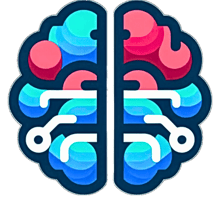Integrative Psychiatry
Original Publication: Aug 4 2017 Sciencebasedmedicine.org
J. Luke
11/23/2024


My post contentPsychiatry hasn't had the best reputation for a long time. The practice has sat under a cloud made up of poor understanding, stigma, and many dangerous, often cruel treatments. Psychiatric patients are truly among the most vulnerable and underserved in the field of medicine, and many struggle on a daily basis. To make matters worse, there is a massive cadre of integrative practitioners, proponents, and related companies who are promoting and practicing what they call integrative psychiatry. (Note that integrative psychiatry should not be confused with integrated psychiatry, which is merely the placement of psychiatrists into other patient care environments to increase access.)
A (very) brief history of mental illness A trepanation hole, a prehistoric treatment for mental illness still used by some who should know better, today. From ancient times until the middle of the 20th century, there have been numerous pseudo-psychiatric treatments based upon religion, superstition, and/or poor science. These include trepanation – drilling holes in the skull to release evil spirits (still practiced by some, believed to increase blood flow); exorcisms – also to rid the body of spirits; insulin shock therapy that would induce hypoglycemic comas; and the infamous lobotomy (leucotomy), which surgically isolated the prefrontal cortex. Antonio Moniz controversially received the Nobel Prize for the latter in 1949. However, for many conditions, the only treatments were psychoanalysis and far too often, long-term confinement in institutes across countries, some used for centuries (a few still exist as modern hospitals). In the 1950s, major psychiatric medications were introduced to the field: chlorpromazine, the first anti-psychotic, and imipramine, the first antidepressant; many others followed quickly. Through this newfound ability to control conditions, patients gained better control of their lives. A large movement of deinstitutionalization followed in the 60s, moving care from institutes to local centers and private practice. Psychiatry became more mainstream very quickly, consultations occurred more, and people became less afraid of the profession and its treatments. In the following decades, further advances were made with the increased usage of the more recent benzodiazepines to replace the more dangerous barbiturates, and SSRIs to replace tricyclics and MAO-inhibitors, that often came with severe side effects and sometimes severe lifestyle restrictions, to treat depression. The asylum and lobotomy days are fortunately behind us, though there still exists a need for psychiatric hospitals and in unique, resistant cases the use of older drugs, electroconvulsive therapy, and sometimes involuntary admittance. Though compared to the past, the contemporary treatment of mental illness is far more advanced and humane, there are still major issues. The medications available are far from perfect. Research funding in the field typically falls far behind that of other diseases, and undertreatment is still a significant problem. The WHO estimates that more than 300 million people suffer from depression worldwide. With less than 50% treated (imagine that for other possibly fatal diseases), it is the current leading cause of disability worldwide. That is just depression though; if we were to factor in the number of people suffering from other mental illness in the world, the number would likely be over a billion. With these numbers, it must also be noted that the suffering endured is truly immeasurable; as a result, a patient’s desire for help is often just as great as those with cancer or other serious illnesses. Their mental states, often already fragile, unfamiliarity with mental illness, and desperation will allow predispose them to grasp at any hope, and integrative medicine stands ready to offer the illusion of a helping hand. Psychiatric illness is serious and should be taken seriously by society. Patients need science-based psychiatry, not more delusions.
The Rise of Integrative Psychiatry and CAM
Integrative psychiatry, like integrative medicine, often involves:
Rebranding conventional advice as “alternative,”
Promoting unproven and unscientific treatments.
A 2015 edition of Kaplan & Sadock’s Synopsis of Psychiatry (not to be confused with their Comprehensive Textbook of Psychiatry) has a chapter on CAM treatments. The book, and its ten prior editions, are mainstream and commonly used for education and reference. In the chapter devoted to CAM and integrative psychiatry, it has an extensive list of CAM options, and here I have excerpted some of the more obscure interventions, with a brief description:
Anthroposophically extended medicine: Using “wisdom of life” to perform mental exercises that balance mind and body
Bates method: Purportedly cures vision problems by splashing warm and cold water on the eyes, swaying, focusing on objects, and thinking happy thoughts
Trager method: Sitting in a chair for an hour or so and being guided through the unconscious mind choosing its own better movements
Environmental medicine: Concerns about hypersensitivity and disease caused by electricity, Wi-Fi, etc. (note that there is also science-based environmental medicine and this ain’t it)
Ozone therapy: Introducing ozone (O3) to the body in order to treat everything from cancer to AIDS. It includes drinking ozonated water and “…insufflations, in which a catheter is inserted into the rectum or vagina with ozone administered at a slow flow rate; and autohemotherapy, in which a person’s own ozonized blood is reintroduced into the body.”
Past life medicine: Using hypnosis to regress a person to a past life and “…the healing process is aided by contact with spiritual beings that are believed to have the ability to reverse illness and maintain health”; according to the text, it is up to the psychiatrist to take the actual regression literally or figuratively
The list also includes many more, like acupuncture, chelation, chiropractic, colonic irrigation, homeopathy, naturopathy, therapeutic touch, and even shamanism.
The Perils of Integrative Psychiatry
The integration of unproven and potentially harmful CAM practices into mainstream psychiatry poses significant risks. By promoting these therapies, practitioners not only mislead patients but also undermine the credibility of evidence-based medicine. This can lead to delayed diagnosis, ineffective treatment, and, in some cases, serious harm.
Patients with mental illness are often vulnerable and desperate for relief. They may be more susceptible to false hope and alternative therapies, especially if they have had negative experiences with traditional treatments. When psychiatrists endorse or promote these unproven methods, they can erode trust and discourage patients from seeking evidence-based care.
Furthermore, the integration of CAM into psychiatry can dilute the focus on rigorous scientific research and evidence-based practice. It can divert resources and attention away from developing new and effective treatments for mental illness. By promoting unproven therapies, psychiatrists may inadvertently contribute to the perpetuation of harmful myths and misconceptions about mental health.
It is crucial to remember that mental illness is a serious medical condition that requires evidence-based treatment. While there is still much to learn about the causes and treatment of mental illness, it is essential to rely on scientific research and clinical expertise to guide our understanding and interventions.
Conclusion: The Need for Science-Based Psychiatry
Psychiatry, while far from perfect, has made significant progress. To address the challenges of mental illness, we need to prioritize science-based approaches and expand access to evidence-based treatments. Promoting unproven and potentially harmful interventions only hinders progress and can cause harm to patients.
As a patient with depression and anxiety, I advocate for real science-based psychiatry. While the field is not without its flaws, it offers hope and healing. Embracing pseudoscience and superstition would be a step backward, potentially leading to disastrous consequences for patients.
